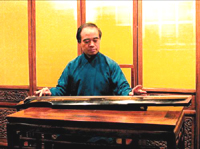
The United Nations Educational, Cultural and Scientific Organization (UNESCO) proclaimed Friday 28 masterpieces including China's ancient Guqin music art as the Oral and Intangible Heritage of the humanity.
Guqin, a seven-stringed zither, is China's oldest stringed instrument with a history of some 3,000 years.
It is viewed as a symbol of Chinese high culture and the instrument most expressive of the essence of Chinese music.
In imperial China, a well educated scholar was expected to be skilled in four arts: the Guqin, the game of Go, calligraphy and painting.
More than 100 harmonics can be played on the Guqin, which is one of the largest numbers of harmonics of any instrument. The art of Guqin has left esthetic and sociological marks over centuries of the Chinese civilization.
The Guqin is the second Chinese masterpiece proclaimed as the world's Intangible Heritage of the humanity. In UNESCO's first proclamation in 2001, the Kunqu Opera, one of the oldest opera forms still existing in China, was put into the list with other 18 masterpieces.
In the second proclamation this year, other 27 pieces were listed, such as Songs of Sanaa from Yemen, the Traditional of Vedic Chanting from India, the Arts of the Meddah -- story telling-- from Turkey and the Music of the Orient Brotherhood from Cuba.
The Oral and Intangible Cultural Heritage, also called living cultural heritage, means in the first place the practices, representations and expressions, as well as the associated knowledge and the necessary skills.
It is manifested in oral traditions, expressions and language; performing arts; social practices, rituals and festive events; knowledge and practices about nature and the universe and traditional craftsmanship.
Earlier in November, UNESCO signed a convention on the safeguarding of the intangible cultural heritage.
(Xinhua News Agency November 8, 2003)
|

